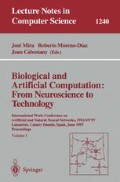Abstract
One of the most popular methods for assessing fetal well-being is the nonstress test (NST). The expert system NST-EXPERT, performs a diagnosis of the nonstress test and formulates therapeutic plans, while taking into account different aspects of the maternal-fetal context, and incorporating these analysis into a model for predicting fetal outcome. The prognosis module actually implemented in the NST-EXPERT uses a mathematical model (based on the certainty factors of Shortliffe and Buchanan) that combines the NST diagnosis with the risk factors present in the maternal-fetal context to predict the fetal outcome. In this work we describe another different approaches followed based on artificial neural networks (ANN), statistical techniques (Bayes, logistic regression) and certainty management methods (Dempster-Shafer). The validation of the different models is performed through a formal methodology of validation using the tool SHIVA.
Preview
Unable to display preview. Download preview PDF.
References
A. Alonso-Betanzos. B. Guijarro-Berdiñas, V. Moret-Bonillo, and S. López, “The NST-EXPERT project: the need to evolve,” Artificial Intelligence in Medicine, vol. 7, pp. 297–313, 1995.
A. Alonso-Betanzos. V. Moret-Bonillo, L. Devoe. J. Searle, B. Banias, and E. Ramos., “Computerized Antenatal Assessment: The ‘NST-EXPERT’ project,” Automedica, vol. 14, pp. 3–22, 1992.
S. Haykin, “Neural Networks: A Comprehensive Foundation,” Macmillan College Publishing Company, New York, 1994.
V. Moret-Bonillo and E. Mosqueira, “A Methodology for Validating Intelligent Systems in Critical Domains,” in Proc. of the 18th Annual Inter. Conf. of the IEEE EMBS. 1996.
V. Moret-Bonillo, E. Mosqueira, and A. Alonso-Betanzos, “Information Analysis and Validation of Intelligent Monitoring Systems in Intensive Care Units” IEEE Transactions on Biomedical Information Technology, (submitted).
J.R. Slagle, S.M. Finkelstein, L.A. Leung and J.W. Warwick, “Monitor: an expert system that validates and interprets time-dependent partial data based on a cystic fibrosis home monitoring program”, IEEE Transactions on Biomédical Engineering, vol. 36, no. 5, pp. 552–558, 1989.
J. Cohen, “Weighted kappa: nominal scale agreement with provision for scaled disagreement of partial credit,” Psychological Bulletin, vol. 70. pp. 107–121, 1968.
G. W. Williams, “Comparing the joint agreement of several raters with another rater,” Biometrics, vol. 32, pp. 619–627. 1992.
G. J. McLachlan, “Cluster analysis and related techniques in medical research,” Statistical Methods in Medical Research, vol.1, pp. 27–48, 1992.
K. Adlassnig, and W. Scheithauer “Performance Evaluation of Medical Expert Systems Using ROC Curves,” Computers and Biomedical Research, vol. 22, pp. 297–313, 1989.
D. K. Donker, A. Hasman, and H. P. Van Geijin, “Kappa statistics: what does it say?,” MEDINFO'92, pp. 901, 1992.
D.G. Kleinbaum “Logistic Regression: A Self-Learning Text.” Springer-Verlag, New York, 1992.
A. Alonso-Betanzos, L.D. Devoe, R.A. Castillo. V. Moret-Bonillo, C. Hemández-Sande, and N.S. Searle. “FOETOS in clinical practice: A retrospective analysis of its performance,” Artificial Intelligence in Medicine, vol. 1, pp. 93–99, 1989.
Author information
Authors and Affiliations
Editor information
Rights and permissions
Copyright information
© 1997 Springer-Verlag Berlin Heidelberg
About this paper
Cite this paper
Alonso-Betanzos, A., Mosqueira-Rey, E., Baldonedo del Río, B. (1997). A comparative analysis of the neonatal prognosis problem using artificial neural networks, statistical techniques and certainty management techniques. In: Mira, J., Moreno-Díaz, R., Cabestany, J. (eds) Biological and Artificial Computation: From Neuroscience to Technology. IWANN 1997. Lecture Notes in Computer Science, vol 1240. Springer, Berlin, Heidelberg. https://doi.org/10.1007/BFb0032560
Download citation
DOI: https://doi.org/10.1007/BFb0032560
Published:
Publisher Name: Springer, Berlin, Heidelberg
Print ISBN: 978-3-540-63047-0
Online ISBN: 978-3-540-69074-0
eBook Packages: Springer Book Archive

